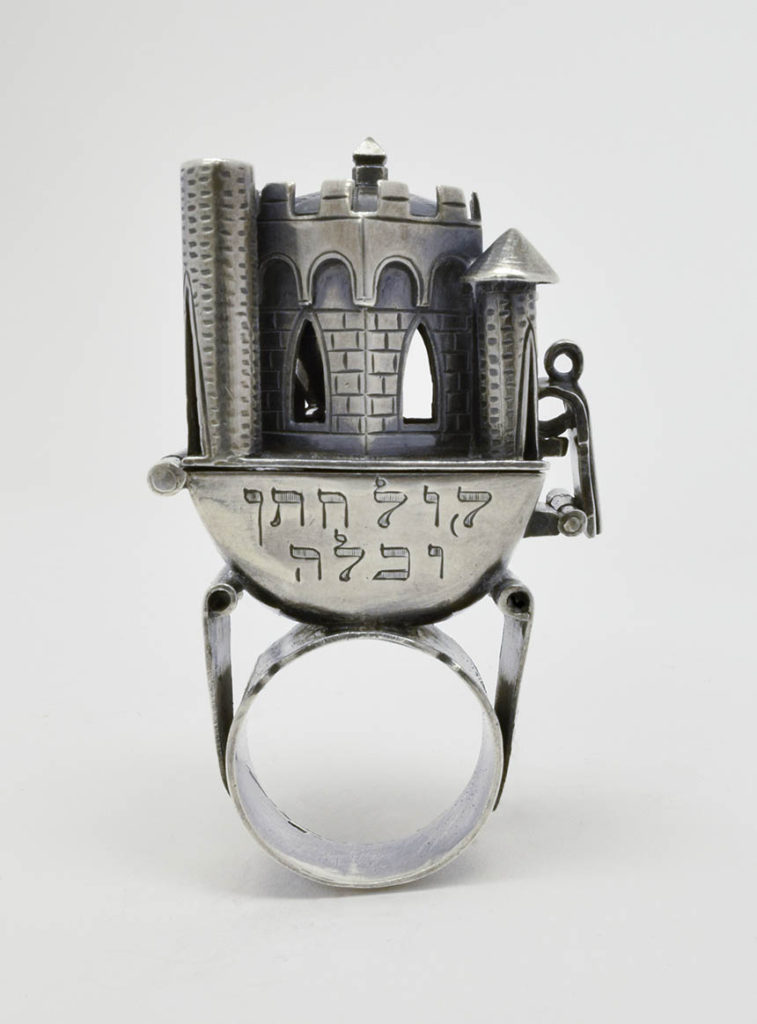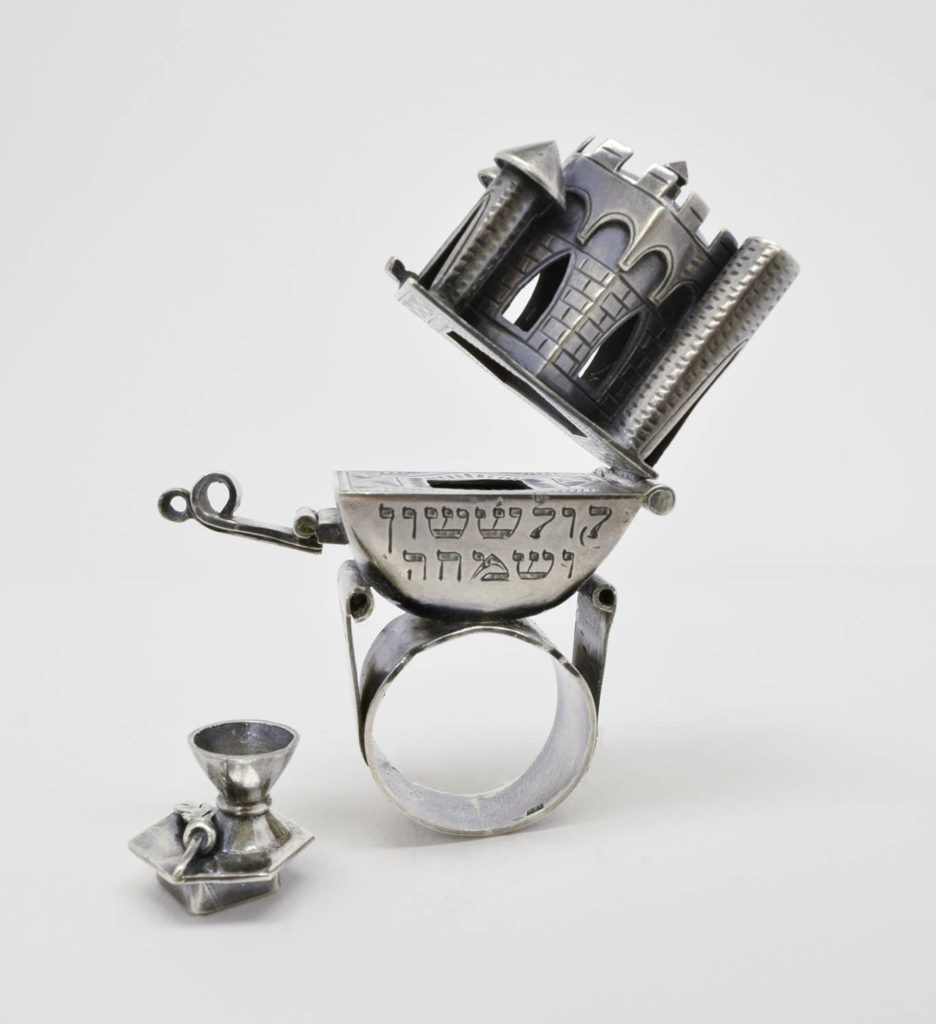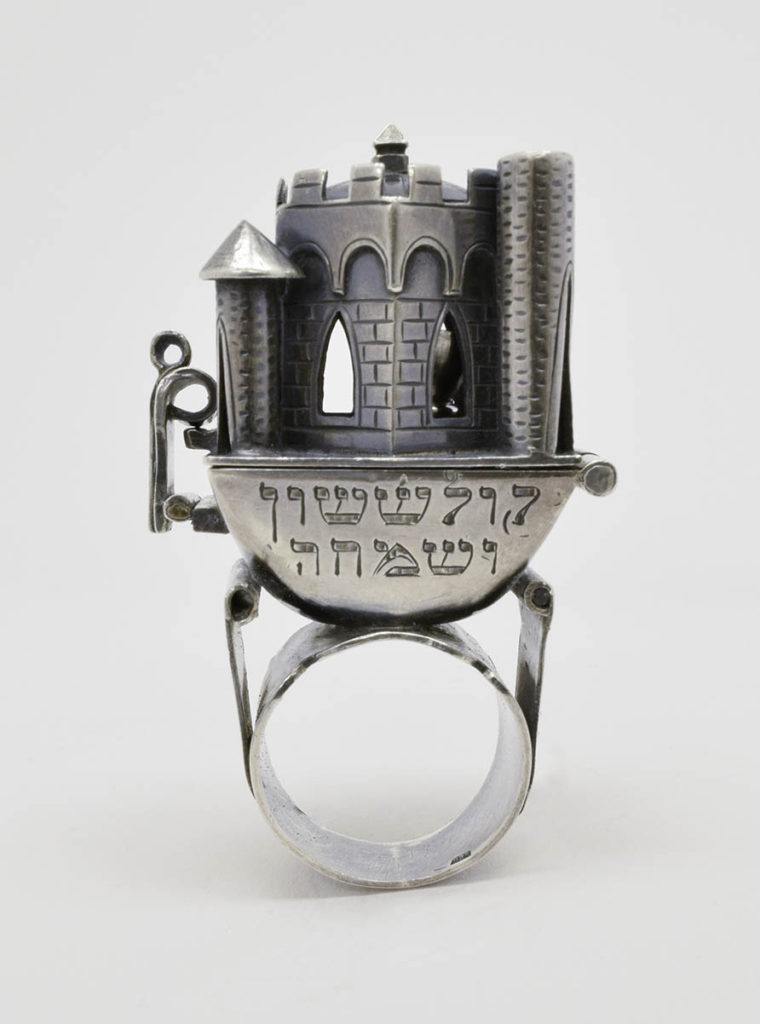Marriage Ring
Hungary, ca. 1850-1950
Silver, 2 9/16 x 1 9/16 x 61/64”
Inscriptions on 4 sides in Hebrew; translation: “to the bride and groom”; “joy and happiness”; “good luck”
B’nai B’rith Klutznick National Jewish Museum Collection, gift of Philip Lax, 2015.17.229
The wedding ring is an integral part of a Jewish wedding ceremony which dates back to the 7th century. According to Jewish law, the wedding ring must be unadorned and free of precious stones. Only one ring – given by the groom to the bride – is required by law. Most couples in the more liberal branches of Judaism now choose to have a double ring ceremony, where each spouse wears a ring.
One custom that began in 16th and 17th century European Jewish communities is that of the communal wedding ring. These rings were ceremonial and only used for the wedding as they were often large and not practical for everyday wear. The custom of communal wedding rings developed in many places as a symbol of Jewish continuity. The ring was lent to the couple by the synagogue for the wedding and would then be returned for the next couple to use. During the ring ceremony, the ring is traditionally placed on the bride’s right index finger. This custom is said to be at least 1000 years old and may stem from the ancient belief that the index finger was connected to the heart.
Many communal wedding rings take the form of a house or castle which is intended to symbolize the home that the newly married couple will make together. This ring opens to reveal a secret compartment with a removable casting of a footed cup that covers an even smaller secret chamber. Following the wedding, the ceremonial ring is replaced by a plain gold band.




